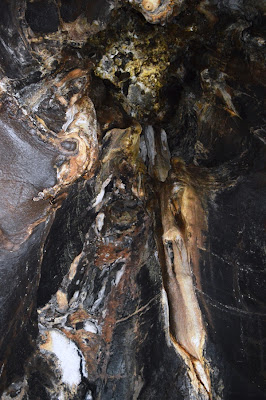One of the things you are rarely prepared for after traveling is reverse culture shock. I expected it after Japan - I'd been there for three years after all. I expect it when I go home to England where, after more than 15 years away, I feel equal parts English and foreigner. I hadn't expected to feel it after just one month in South Africa.
It was only a month!
I didn't suffer any jet lag when I came home. In fact I was so energized by the trip, I think my husband was exhausted by my constant bounciness. I wanted to tell him everything. I wanted him to understand how cute Chino was when he played with my hair; how important it was to keep obs on the macaques as they had their bizarre arguments; how the marmosets would look at you during pellet time.
The first morning I was home, I had no idea what to wear. After a month of vest, shorts, and flip-flops, clothing seemed so...unimportant. Over the next week, so many things that had previously seemed important now seemed overwhelming. What to wear, what to buy for dinner, what movie to see. I told my husband that none of it mattered. He thought I was falling into depression, but it wasn't that. I just no longer felt that it mattered. After a month of few worries other than basic needs and caring for my monkeys, anything else seemed so petty. Every morning, my first though when I awoke was whether someone had remembered the 4.30 am feed and how everyone was doing.
Equally frustrating was the realization that while I had been away for an incredible month, everyone else's lives had just ticked on. I wanted to show them pictures and tell them stories while they wanted to tell me about their problems at work or with the neighbors. I grew worried that I would be that person who drones on and on about their trip so I did the opposite. I barely mentioned it to anyone.
So how do you deal with reverse culture shock?
Here are my tips:
- Keep in touch with friends you made during your trip. Facebook has been great because it lets me share pictures and experiences with others who were there and who understand. This is especially important when you realize that many of your home friends will soon tire of the pictures and the stories.
- Find those few people who do want to hear everything. My husband has seen how energized the trip made me and, although he doesn't necessarily understand everything, he wants to hear about it.
- Don't feel as if you have to throw yourself back into life as it was before you left. I know some people will say that's exactly what you should do, but bottom line is you've changed. Ease yourself in. I wore flip flops for a week and to hell with the snow. I still don't feel the need to bother with make up or earrings, and the only pieces of jewelry I now wear are a cheap wedding ring I bought for travel and an African bracelet. They're important to me because they represent my time in Africa.
- It's ok to not be the same person you were before you left. You found new passions while you were gone. You lived your dreams. Don't lose that hope and energy.
- Try to view your home as "another foreign location". You've been away for a while so take some time to explore it again. Visit that local haunt you've always been meaning to go to. View things with a set of fresh eyes.
Ultimately, travel changes you and that's ok. Keep that energy going and use it to drive you to your next trip.
As for me, I'm soon hitting the road again, but in a very different way and to a very different location. My parents and two of my nieces are arriving from England tomorrow so I will be spending next week in Gatlinburg on a family vacation, exploring a more familiar location but through multiple sets of eyes.












